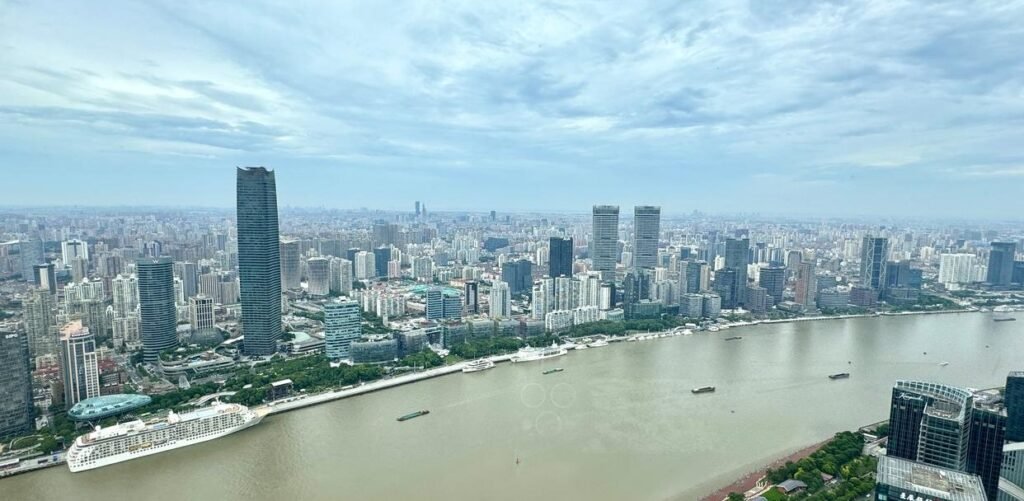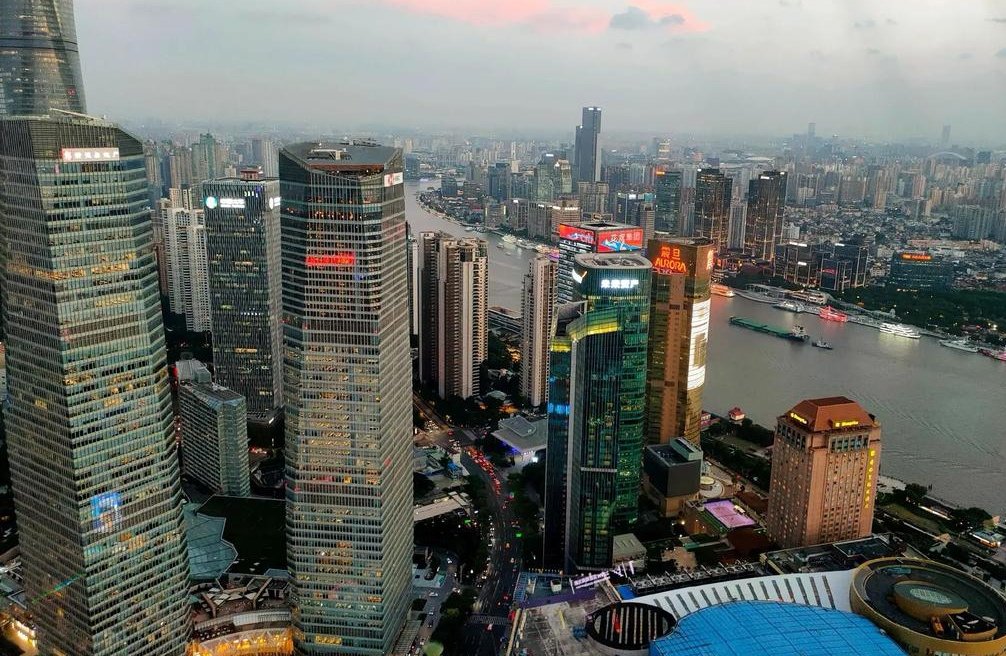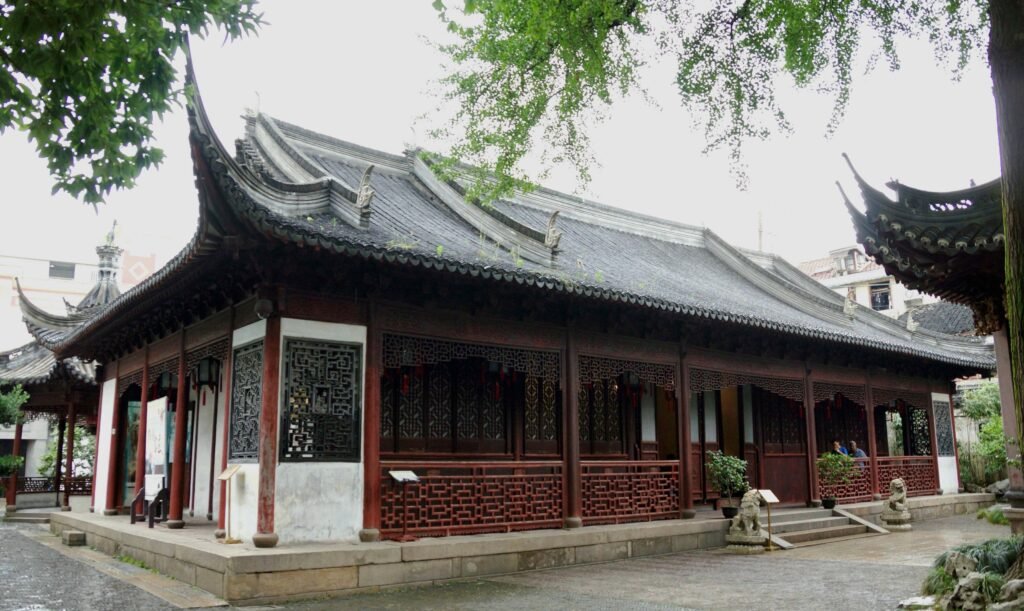The Beautiful Five Day Tour in Shanghai Itinerary China
A five-day tour in Shanghai Itinerary can focus on city landmarks, theme parks and special experiences. The specific itinerary is as follows:

Day 1: Upon arrival, visit The Bund International Buildings, take a Huangpu River cruise (2-yuan ticket price) to enjoy the scenery of the Huangpu River, and go shopping or taste snacks on Nanjing Road Pedestrian Street in the evening.

Day 2: Go to Lujiazui Financial District, check in at The Oriental Pearl Tower and Jinmao Tower and overlook the panoramic view of the city. In the afternoon, you can take a walk to Zhengda Shopping Mall or Binjiang Avenue.
Day 3: Spend the whole day at Shanghai Disneyland to experience the theme rides and performances. It is recommended to purchase tickets in advance and enter the park as early as possible.

Day 4: Visit the City God Temple, Yu Garden and Old Street, taste local snacks such as steamed buns and fried dumplings, and experience Shanghai’s traditional customs.
Day 5: Go to Shanghai Museum to learn about history and culture, or choose shopping at Nanjing West Road or leisure around Jing’an Temple to end the trip.
Special Activities and Food
Night view and food: The Bund night view, Huangpu River cruise, Nanjing Road Pedestrian Street supper (such as Huanghe Road Food Street).
Authentic snacks: Nanxiang Xiaolongbao, Shengjianbao, and Wukang Road Coffee House.
Getting around and accommodation
Getting around: The subway should always be the primacy when moving around. Landmarks on Line 2 and Line 10 are major attractions. Some attractions can be reached by sightseeing buses and taxis.
Accommodation: It is recommended to stay around Nanjing Road, Lujiazui, or Disneyland. These areas are well connected with transport and also possess facilities.
Best weather to visit for Shanghai Itinerary
The Magic City Shanghai has long been planted in the hearts of countless people. It is the first choice for many people to travel. Many friends want to go to Shanghai during holidays to see the modern metropolis.
So which month is better to go to Shanghai Itinerary?
This must be a topic that everyone is more concerned about. Let’s talk about this topic together.
The best time to travel to Shanghai is in spring and autumn, specifically from March to May and from September to November. The following is a detailed analysis of the weather in Shanghai in each season:
Spring (March-May)
- Climate characteristics: mild and humid, pleasant climate.
- Temperature range: The average temperature is between 10℃ and 20℃, with a large temperature difference between morning and evening.
- Suitable activities: flower viewing and outing, suitable for outdoor activities.
Summer (June-August)
- Climate characteristics: hot and humid, with concentrated precipitation.
- Temperature range: Average temperatures range from 20°C to 35°C, with July and August being the hottest months, which may exceed 35°C.
- Suitable activities: Escape the summer heat and experience Shanghai’s nightlife and various delicacies.
Autumn (September-November)
- Climate characteristics: cool and pleasant, clear and crisp air in autumn.
- Temperature range: The average temperature is between 18℃ and 25℃.
- Suitable activities: Admiring the red leaves and the pleasant autumn scenery is the best time to taste hairy crabs.
Winter (December-February)
- Climate characteristics: relatively cold, but less wet and cold weather.
- Temperature range: The lowest temperature can drop to around -3 degrees Celsius and the highest temperature is around 5 degrees Celsius.
- Suitable activities: Avoid the crowds and visit art galleries and museums, or experience the Christmas atmosphere in Xintiandi.
Which Month is the best to visit Shanghai? Analysis of the best months to visit Shanghai!
The temperature in Shanghai gradually warms up in spring and the sun is bright, making it a very suitable season for travel.
Xiamen’s tourist attractions are equally exciting, such as Zengcuo’an, a unique fishing village and cultural village suitable for couples to stroll, where you can taste a wide variety of southern Fujian snacks; Haiwan Park is a coastal park where you can enjoy the sea, watch the sunset and fly kites. It is open all day and is a great place to relieve stress.
In March, Shanghai’s plum blossoms, magnolias and other flowers begin to bloom, especially the cherry blossoms in Gucun Park, which are in full bloom from late March to early April. The cherry blossoms in the park are in full bloom, as if entering a pink fairy tale world, attracting many tourists to come and watch and take pictures.
In April and May, the temperature is more pleasant, and the major parks and streets in Shanghai are filled with the breath of spring. You can stroll along the Bund to enjoy the scenery on both sides of the Huangpu River and feel the fusion of history and modernity; you can also go to Yu Garden to appreciate the charm of the Jiangnan water town in the classical gardens. In addition, spring is also a good time to taste Shanghai’s specialties, such as Qingtuan, which has a soft, glutinous and sweet taste that makes people linger.
Summer is the peak tourist season in Shanghai. Although the temperature is high, it also has its unique charm.
In June, Shanghai enters the plum rain season, with more rain, but the air is humid and the city seems fresher. At this time, you can go to the Shanghai Science and Technology Museum to experience the charm of science and technology in the cool indoor environment and learn about natural science knowledge.
In July and August, the weather is hot, and Shanghai’s major water parks have become a good place for people to cool off. For example, Tropical Storm Water Park has a variety of exciting water projects and amusement facilities, allowing tourists to enjoy coolness and fun in the hot summer. In addition, Shanghai is more dazzling at night. Climb up the Oriental Pearl Tower or Shanghai Tower to overlook the night view of the entire city, which is brilliantly lit and beautiful.
Autumn is one of the most comfortable seasons in Shanghai, with clear skies and moderate temperatures. From September to October, sweet osmanthus flowers are in full bloom in Shanghai, and the streets and alleys are filled with the rich fragrance of sweet osmanthus. You can go to classical gardens such as Guyi Garden and Zuibaichi to enjoy the autumn scenery and feel the unique charm of Jiangnan gardens in autumn.
In November, the maple leaves in Shanghai begin to turn red. Jinshanlangxia Country Park and Gongqing Forest Park are good places to enjoy the red leaves. In addition, autumn is also the best season to taste Shanghai hairy crabs. The plump hairy crabs are tender and have full roe, which makes people salivate. Shanghai is relatively cold in winter, but it also has a unique charm.
From December to January, Shanghai’s shopping malls and streets are decorated with festive atmosphere, especially during Christmas and New Year’s Day, when various Christmas trees, colorful lights and decorations fill the city with joy. You can go shopping on Nanjing Road Pedestrian Street to experience the lively festive atmosphere.
In February, during the Spring Festival, Shanghai has many traditional folk activities, such as the Yuyuan Lantern Festival, where colorful lanterns of various shapes attract a large number of tourists. In addition, in winter, you can go to Shanghai’s hot spring resorts to relax and drive away the cold.
In general, each season in Shanghai has its own unique charm and highlights. If you like to enjoy flowers and feel the warm climate, spring is a good choice; if you want to experience the water park and the dazzling night view, summer will meet your needs; autumn is the best time to enjoy the autumn scenery and taste hairy crabs; and if you want to experience the festive atmosphere and traditional folk activities, winter also has a unique flavor. You can choose the most suitable month to visit Shanghai according to your interests and preferences.
How to navigate shanghai Itinerary without speaking Chinese
To get around Shanghai Itinerary without speaking Chinese, you can:
- Language Assistance Tools
- Translation software/APP
Use real-time translation tools (such as Google Translate, Baidu Translate) or mobile apps (such as Qyer and Tuniu) to look up attraction names, restaurant information, and route directions.
Body language & stuff everyone gets:
Basic moves:
If you’re totally lost for words, just point at the menu—or heck, do your best impression of “xiaolongbao” with your hands. People get it. Desperation pantomime is a universal language.
Metro signs:
Before you dive into the Shanghai subway system (which is honestly kind of a beast), get a look at their map—Line 2, Line 10, all that jazz. The station signs are everywhere, and even if you don’t read Chinese, the colors and numbers usually bail you out.
Chinese signs & maps:
– Attraction markers
Most big sights—think the Bund, Chenghuang Temple—have bilingual signs. So, unless you’re trying to find some sketchy back-alley noodle spot, you’ll probably survive.
– Paper maps
Old school, but still handy. Grab a Shanghai city or scenic map and maybe circle Nanjing East Road or Yu Garden.
Local stuff you gotta try:
– Go local
Pick shops or guides who speak Chinese, like the OG Nanxiang Xiaolongbao shop or Yuyuan Snack Street. Or just tag along on those “Micro Tour Shanghai” things—fun, kinda weird, and you might stumble on some hidden gem.
– Cultural vibes
If you wanna feel the city, look up at those Shikumen houses, wander the alleys, or gawk at the Bund at night. It’s got a vibe, trust me.
Real talk: survival tips
– Prep ahead: Google Translate is your BFF for checking hours, ticket prices, routes, all that boring but necessary stuff.
– Bring cash: Not everywhere takes cards, and you do NOT wanna be that person digging for coins while grandma yells at you in Shanghainese.
– Emergencies: SOS is universal, or just run to your hotel front desk and beg for help. They’ve seen it all.
Honestly, even if you can’t say a word of Chinese, you can totally get around Shanghai—and maybe even have some fun while you’re at it.
What is the most reasonable way to spend a day in Shanghai Itinerary?
A one-day tour in Shanghai is very tight, and a well-planned route can help you experience the essence of the fusion of classics and modernity. The following is an optimized itinerary suggestion that takes into account culture, food, and city landscapes to ensure a smooth itinerary without detours:
Morning: Bund Historical Scenery + City Stroll
7:30-8:30 The Bund in the morning
There are fewer people in the early morning, which is suitable for taking pictures of the International Building Complex and the Lujiazui skyline.
It is recommended to start from Waibaidu Bridge (the filming location of “Deep Love in the Rain”) and stroll south to Shilipu Wharf.
8:30-9:30 Nanjing East Road Pedestrian Street
Feel the style of the century-old commercial street and check in at Shanghai No. 1 Food Store and Shen Dacheng (you can take out Qingtuan/Tiaotougao for breakfast).
9:30-10:30 Yu Garden & City God Temple
Yu Garden (ticket price: 40 yuan): A Jiangnan garden from the Ming Dynasty, with the main attractions being the large rockery, Yulinglong, and the Nine-Curve Bridge.
Chenghuang Temple Business District: Mainly for taking photos (heavily commercialized), where you can buy souvenirs such as pear paste candy.
Noon: Old Town Food Experience
10:30-12:30 Lunch around Yu Garden
Green Wave Restaurant : Classic Shanghainese cuisine, try the crab meat dumplings and squirrel fish.
Nanxiang Steamed Bun Shop : Guyiyuan Xiaolongbao (the line at the take-out window on the first floor is fast).
Or choose Da Hu Chun (Sichuan Middle Road Branch) , which is frequented by locals, to eat shengjian.
Afternoon: Lujiazui Modern City + Art Tour
12:30-13:00 River Crossing Experience
Take the 2 yuan ferry (Dongjin Line) from Jinling East Road Pier to Dongchang Road Pier and enjoy the scenery on both sides of the Huangpu River along the way.
13:00-15:00 Lujiazui Three-piece Set
Shanghai Tower: Climb to the 118th floor observation deck (180 yuan) to get a panoramic view of the city.
Or choose Duoyun Academy (52nd floor, Shanghai Tower, reservation required through WeChat official account), order a cup of coffee and overlook the river.
Check-in points on the ground: Lujiazui overpass, and take a three-piece photo from above at the foot of the Oriental Pearl Tower.
15:00-16:30 Pudong Art Museum/Aurora Museum
If you like art, we recommend the Pudong Art Museum (built by the river, with a glass corridor offering great views).
Or the Aurora Museum (designed by Tadao Ando, with exhibits mainly consisting of ancient pottery and jade).
Evening to night: Riverside night view and art district
16:30-18:00 North Bund or Riverside Promenade
Avoid the crowds and head to North Bund Magnolia Square to take photos of the reflection of Lujiazui and the cruise ship.
Or you can ride along the Pudong Riverside (there is a dedicated cycling path), passing by the Yicang Art Museum and the old shipyard.
18:30-20:00 Dinner options
Lujiazui IFC International Financial Center : a concentration of high-end restaurants (such as Xin Rong Ji and Yong Fu).
BFC Bund Financial Center : rooftop bar or Crab Courtyard (crab golden noodles).
20:00-21:00 The Bund at night
Return to the Bund to enjoy the light show (lights turn on at 19:00 in summer), or take a night cruise on the Huangpu River (book tickets in advance through Ctrip).
Flexible adjustment plan
History lovers : add the Shanghai Museum in the morning (reservation required, top-notch bronze ware/calligraphy and painting exhibitions).
Arty youth : In the afternoon, the route will be changed to West Bund Art Museum Boulevard (Long Museum, Tank Art Center).
Family tour : Join the Shanghai Natural History Museum (near Jing’an Temple, reservation required) or Disney Town (reservations are required for remote suburbs).
Useful Tips:
Transportation : The subway uses the “Metro Metropolis” APP to scan the code, and the ferry supports transportation cards.
Time-saving tips : Go to Yu Garden/museum attractions early or at noon to avoid the peak hours; Duoyun Academy is a better choice for high-rise viewing in Lujiazui.
Dressing suggestions : Comfortable shoes are a must, bring a thin jacket as it is windy outside, and adjust your itinerary indoors on rainy days.
By following this route, you can see Shanghai’s “past, present, and future” in one day, with both the atmosphere of the old city and the charm of an international city.
